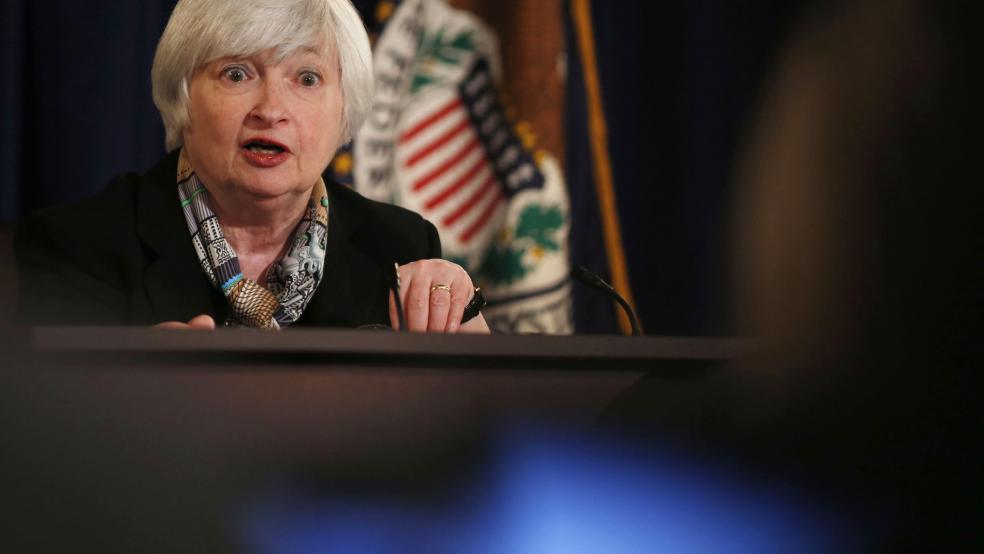Back in the days before the Great Recession, it was hard to pick up the business section of a newspaper (yes, we had newspapers, and business sections, then) that didn’t have some version of a column asking, “When Will the Fed Raise/Lower Interest Rates?”
Fed watching columns were a staple of the business press, and the terse utterances of the central bank following meetings of the Federal Open Market Committee were parsed with Jesuitical precision.
Related: Investors in Denial Over Coming Fed Rate Hikes
In those days, pondering the direction of interest rates was practically a full-employment program for financial journalists. But the great game of Fed watching has lost something in the past few years. The days when reporters obsessed over the size of the briefcase Fed Chairman Alan Greenspan carried to work on the day of FOMC meetings are long gone.
Sure, people have continued to play the game in the years since the Great Recession, but only in the half-hearted, mechanical way that old men play bocce in the park – more out of habit than any real passion.
The reason, of course, is that for years, everybody has known the answer to the key question. In an effort to stave off an economic depression by stimulating economic growth, the central bank drove rates down to just a hair above zero, and explicitly promised the markets that it planned to keep them there for a good long while.
Related: The Threat that Could Scar the Economy for Decades
“When will the Fed raise rates,” you ask?
“Not anytime soon,” says everybody.
When predictions are measured in years instead of months, it’s hard to get very excited. Who wants to play that game?
But the game is changing. True, nobody expects the Fed to raise the benchmark federal funds rate when the FOMC meets next week. But for the first time in more than half a decade, an actual increase in rates is a real possibility in the not-too-distant future.
Fueled by comments from Fed officials, speculation has exploded this week over whether the central bank would change its policy language, which since March has promised that rates would stay low for a “considerable time” after it wound down its bond-buying program meant to stimulate the economy. Those bond purchases are set to end next month, meaning Fed watchers have reason to get excited again about their favorite pastime.
On Thursday, the UCLA Anderson School of Management released its respected economic forecast, and made the unexpectedly bold prediction that the Fed would start raising rates early next year. The conventional wisdom in the financial world held that rate hikes remained at least a few months further away.
Related: Interest Rates Test Yellen’s Powers of Persuasion
“In response to declining unemployment and rising inflation we forecast that the Fed will increase interest rates at its March 2015 meeting,” the report found. “Thereafter we expect a gradual increase in the Federal Funds rate to about 3 percent by the end of 2016.”
Bank of America Merrill Lynch, in a report also issued Thursday, likewise predicted an earlier increase, though not quite as early as UCLA’s.
“After an internal debate over the past month, we are changing our Fed call, pulling forward the first Fed rate hike from September to June 2015,” wrote Ethan Harris, the bank’s global economist. “We still assume the Fed hikes at every other meeting for the first year and a half of the tightening cycle, but eventually, we expect rates to return to normal.”
Normal, for those who have forgotten, is probably somewhere in the neighborhood of 4 percent. But bearing in mind that we are starting from an unprecedentedly low base, the increase in interest rates that now seems inevitable ought to be viewed as good news by anyone paying attention to the economy.
Related: 30 Percent of ‘Retirees’ Would Return to the Workforce
The Fed has been clear that rates will only rise when a combination of higher employment rates and increasing inflation make them important. At the moment, both would be good news for the U.S. economy.
That means folks who pay attention to the U.S. economy will be glad to see the Fed-watching game start up again.
Top Reads from The Fiscal Times:





